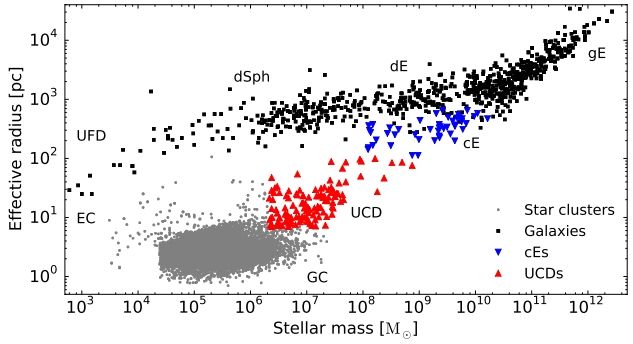> Astronomers found Dragonfly 44 with the W. M. Keck Observatory and the Gemini North telescope on Mauna Kea, Hawaii
That’s a heck of a deep image from Keck and Gemini North. This is the sort of image that in the past has only been possible with Hubble.
More info on:
http://www.keckobservatory.org/recent/entry/scientists_discover_massive_galaxy_made_of_99.99_percent_dark_matter
> The image on the left is a wide view of the galaxy taken with the Gemini North telescope using the Gemini Multi-Object Spectrograph (GMOS) … To determine the amount of Dark Matter in Dragonfly 44, astronomers used the DEIMOS instrument installed on Keck II to measure the velocities of stars for 33.5 hours over a period of six nights so they could determine the galaxy’s mass. The team then used the Gemini Multi-Object Spectrograph (GMOS) on the 8-meter Gemini North telescope on Mauna Kea in Hawaii to reveal a halo of spherical clusters of stars around the galaxy’s core, similar to the halo that surrounds our Milky Way Galaxy.
> DEIMOS (DEep Imaging Multi-Object Spectrograph) boasts the largest field of view (16.7 arcmin by 5 arcmin) of any of the Keck Observatory instruments, and the largest number of pixels (64 Mpix). It is used primarily in its multi-object mode, obtaining simultaneous spectra of up to 130 galaxies or stars. Astronomers study fields of distant galaxies with DEIMOS.
See also:
https://en.wikipedia.org/wiki/Ultra_diffuse_galaxy
The scientific discovery paper is:
https://arxiv.org/pdf/1504.03320v1.pdf
titled
“Spectroscopic Confirmation of the Existence of Large, Diffuse Galaxies in the Coma Cluster”.
> We recently identified a population of low surface brightness objects in the field of the z=0.023 Coma cluster, using the Dragonfly Telephoto Array. Here we present Keck spectroscopy of Dragonfly 44, the largest and second brightest of these “ultra-diffuse galaxies” (UDGs), confirming that it is a member of the cluster.

